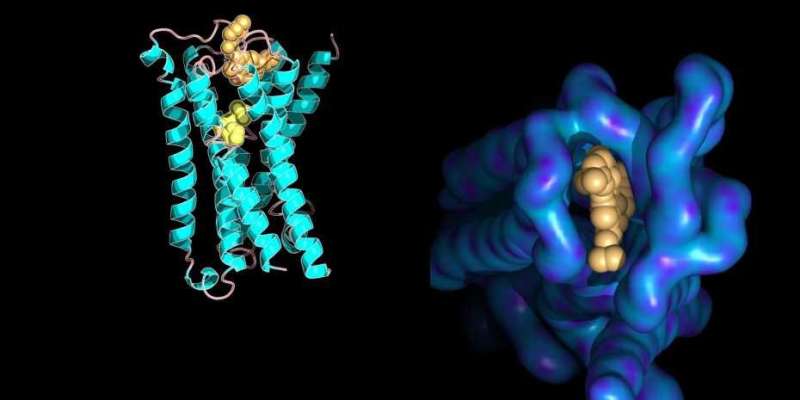Measuring molecular interactions

ETH Zurich researchers have used a new approach to discover previously unknown interactions between proteins and small metabolic molecules in bacterial cells. The technique can also be used to test the effect of medications.
Science now has a new "omics" – an interactomics, which deals with the interactions between proteins and small molecules. Having previously focused on genomics or proteomics, system biologists can now add protein-metabolite interactomics to the mix. Genomics is concerned with the systematic analysis of all of an organism's genes, while proteomics deals with the entire set of proteins within a biological unit.
With protein-metabolite interactomics, the group led by Paola Picotti, professor of Molecular Systems Biology at ETH Zurich, has now added another level to the existing "omics." The researchers recently published a study in the journal Cell, in which they systematically analysed and quantified the interactions of all proteins with metabolites (small metabolic molecules) on the level of the whole proteome for the first time, establishing the relationships between them.
Different cutting sites
The researchers have shown how many of the proteins and enzymes present in an E. coli bacterial cell interact with metabolites. To do so, they used an approach known as limited proteolysis (LiP), combined with mass spectrometric analysis.
The researchers extracted cellular fluid, which contains proteins, from the bacterial cells. They then added a metabolite to each sample and allowed it to interact with the proteins. Finally, they cut the proteins into smaller pieces (peptides) using "molecular scissors." In total, the researchers tested 20 different metabolites and their interactions with proteins in this way.
When a protein interacts with a metabolite, whether it settles in the protein's active site or attaches to another site, the protein structure is altered. The "molecular scissors" then cut it at different sites from the original structure, resulting in a different set of peptides.
Using the mass spectrometer, the researchers measured all of the pieces present in the sample and fed the data obtained into a computer to reconstruct the structural differences and changes, and where in the protein these are localised.
Hundreds of new interactions discovered
Knowledge about the protein-metabolite interactome (the interactions between proteins and metabolites and the molecular (signal) networks belonging to them), was previously very limited compared with what was known about interactions between different proteins or between proteins and DNA or RNA. The study has now sharply increased this knowledge.
Using this approach with E. coli, Picotti and her team discovered about 1,650 different protein-metabolite interactions, of which over 1,400 were previously unknown. Thousands of binding sites on proteins to which metabolites can attach also came to light. "Although the metabolism of E. coli and associated molecules is already very well known, we succeeded in discovered many new interactions and the corresponding binding sites," says Picotti. This proves the method's enormous potential: "The data that we produce with this technique will help to identify new regulatory mechanisms, unknown enzymes and new metabolic reactions in the cell."
Structural change regulates activity
In their study, the researchers also show that small metabolic molecules prefer to bind to (and thus regulate) proteins whose concentration is more or less constant over time. This suggests that the binding of metabolites to proteins and changes in protein concentrations are two complementary pathways by which cells regulate protein activity.
Proteins can be activated or inactivated relatively quickly by a structural change mediated by metabolites. "This kind of structural change can be reversed more quickly," explains Picotti. From the perspective of the cell, this often makes sense, because using the pathway involving a change in concentration means that the cell must dismantle or rebuild proteins, which costs it more time, energy and resources.
Picotti and her colleagues have also been able to show that many enzymes are less choosy than previously thought: they can apparently bind to and chemically alter several different metabolites. Until now, it was assumed that enzymes were mostly specific to a few very similar molecules.
The pharmaceutical industry is very interested in the new approach, as it can be used to test the interaction of drugs with cellular proteins and identify the targets of a drug. Researchers could investigate which proteins and which sites this drug binds to, how it alters their structure and thus influences their activity. This would facilitate and accelerate tests and the development of new drugs.
More information: Ilaria Piazza et al. A Map of Protein-Metabolite Interactions Reveals Principles of Chemical Communication, Cell (2018). DOI: 10.1016/j.cell.2017.12.006
Journal information: Molecular Systems Biology , Cell
Provided by ETH Zurich


















